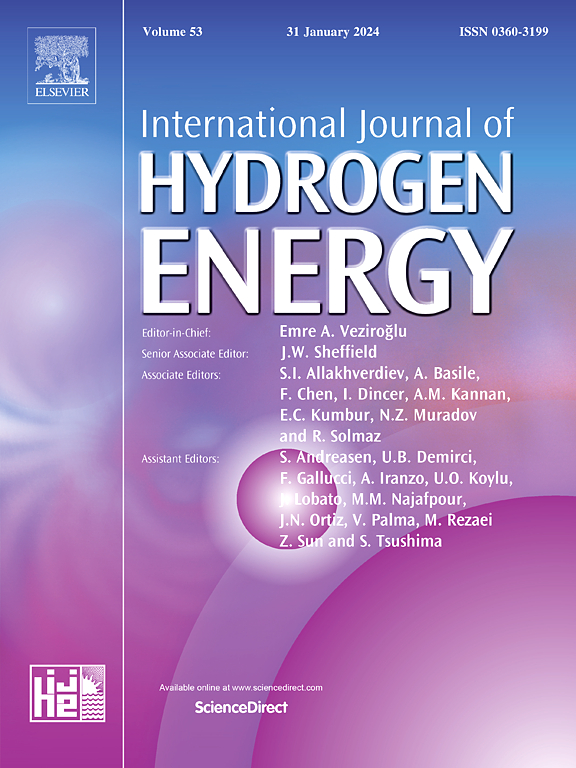Geometry and flow field optimization design of solid oxide fuel cell stack for temperature and flow rate uniformity improvement
IF 8.3
2区 工程技术
Q1 CHEMISTRY, PHYSICAL
引用次数: 0
Abstract
Solid Oxide Fuel Cells (SOFCs) represent an advanced energy conversion device capable of directly transforming the chemical energy derived from hydrogen or hydrocarbon fuels into electrical energy under high-temperature operating conditions. One of the primary factors contributing to cell failure and performance degradation in high temperature operation condition is the thermal stress induced by the mismatch in thermal expansion coefficients among the constituent materials. Therefore, the effect of geometric parameters and flow fields of SOFC stack on flow rate, temperature was analyzed using numerical simulation methods for uniformity improvement. The results show that the manifold width significantly affects the temperature distribution of the stack. When the manifold width is increased from 6 mm to 10 mm, a maximum improvement of 25.8 % in flow uniformity can be reached. Furthermore, the flow field structure has a considerable impact on both the temperature and flow distribution within the SOFC stack. In the L-type flow field SOFC stack, flow rate and temperature uniformity are significantly improved, with the maximum reduction in temperature standard deviation reaching 29.7 %, and flow uniformity achieves an optimal improvement of up to 72 %.
固体氧化物燃料电池堆的几何和流场优化设计,以提高温度和流量均匀性
固体氧化物燃料电池(sofc)是一种先进的能量转换装置,能够在高温工作条件下将氢或碳氢化合物燃料中的化学能直接转化为电能。在高温工作条件下导致电池失效和性能下降的主要因素之一是组成材料之间热膨胀系数不匹配引起的热应力。为此,采用数值模拟方法,分析了SOFC堆的几何参数和流场对流量、温度的影响,以提高均匀性。结果表明,流道宽度对堆内温度分布有显著影响。当歧管宽度从6 mm增加到10 mm时,流动均匀性可达到25.8%的最大改善。此外,流场结构对SOFC堆内的温度和流动分布都有相当大的影响。在l型流场SOFC堆中,流量和温度均匀性得到显著改善,温度标准差最大降低29.7%,流动均匀性最优改善可达72%。
本文章由计算机程序翻译,如有差异,请以英文原文为准。
求助全文
约1分钟内获得全文
求助全文
来源期刊

International Journal of Hydrogen Energy
工程技术-环境科学
CiteScore
13.50
自引率
25.00%
发文量
3502
审稿时长
60 days
期刊介绍:
The objective of the International Journal of Hydrogen Energy is to facilitate the exchange of new ideas, technological advancements, and research findings in the field of Hydrogen Energy among scientists and engineers worldwide. This journal showcases original research, both analytical and experimental, covering various aspects of Hydrogen Energy. These include production, storage, transmission, utilization, enabling technologies, environmental impact, economic considerations, and global perspectives on hydrogen and its carriers such as NH3, CH4, alcohols, etc.
The utilization aspect encompasses various methods such as thermochemical (combustion), photochemical, electrochemical (fuel cells), and nuclear conversion of hydrogen, hydrogen isotopes, and hydrogen carriers into thermal, mechanical, and electrical energies. The applications of these energies can be found in transportation (including aerospace), industrial, commercial, and residential sectors.
 求助内容:
求助内容: 应助结果提醒方式:
应助结果提醒方式:


